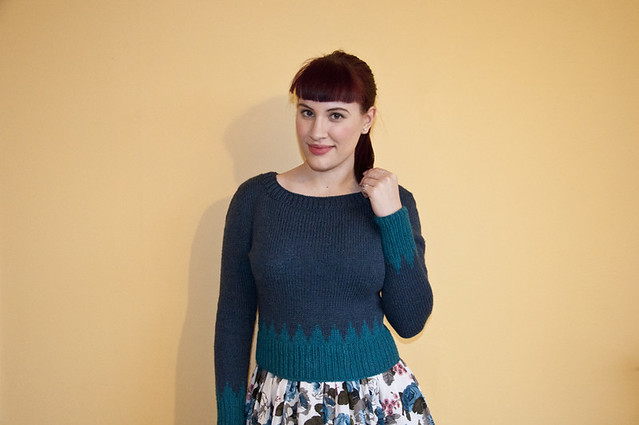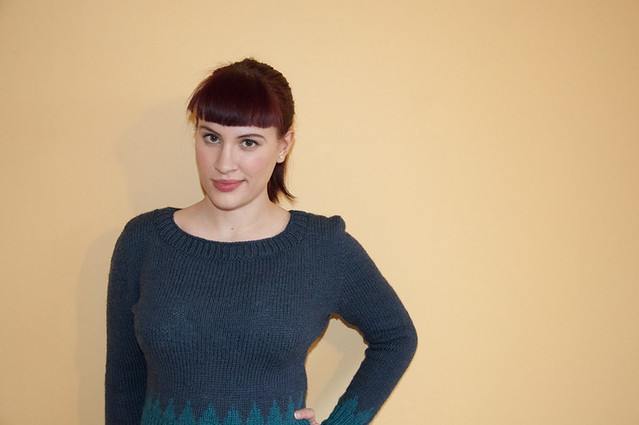These sleeves weren’t made using my usual technique, and I thought they deserved their own post. Usually I knit the whole body, and then I pick up stitches around the arm hole and use short rows to shape the sleeve cap. For this sleeve I didn’t us any short rows. I started the body like I normally do, but I only knit an inch of the back befog I picked up stitches for the fronts. With about an inch on the fronts and an inch on the back, I picked up stitches along what will be the tops of the armhole, and that joined everything together so I was knitting the front, sleeves, and back simultaneously. The armholes are shaped with increases as you knit. Pretty straight forward, right?
There are a few great things about this technique. It lets you do stripes easily, and you can more easily incorporate stitch patterns than you can using short rows. You also only need to increase as many stitches as you need for your upper arm. When you pick up stitches to shape sleeves with short rows, the number of stitches you pick up is dictated not by the upper arm measurements but by the number of rows you have. To keep your sleeve cap from bunching up or having gaps where it meets the arm hole, generally you have to pick up more stitches than you actually need so you have to do rapid decreases immediately after the short rows. With this simultaneous method, you just need to increase as many stitches as you need, and then you can work straight until you have the armhole depth you want.
Sounds almost too good to be true, right? Well, the method has quite a few problems. If you’re working on a pullover, when you cast on the neckline and join in the round, the beginning of the round ends up being smack dab on the front of your sweater. This isn’t ideal for stripes or stitch patterns that jog which pretty much cancels out the biggest perk of this method. There are ways around that problem. You can break your yarn, slip stitches, and move the beginning of the round to somewhere like the underarm, but that’s a bit fiddly. The other big problem with this method is one that’s a deal breaker for me. The top of the sleeve is very structured and the rest of the sleeve isn’t. This causes a wide variety of issues, the most obnoxious one being that the shoulder sticks up oddly when I raise my arms even slightly. This could be used to your advantage if you’re making puff sleeves, but it’s not cute on fitted ones. Other issues include the sleeve cap stretching over my chest and the front or back stretching over my arm when I move around. The line of increases that visually separates the sleeve from the body doesn’t have enough structure to stay where it belongs.
I might play around with this technique a bit because it does have potential, but I think I’ll be sticking with short rows or seams for my set in sleeves. Have you knit a sweater before using this method? What did you think?



Leave a Reply